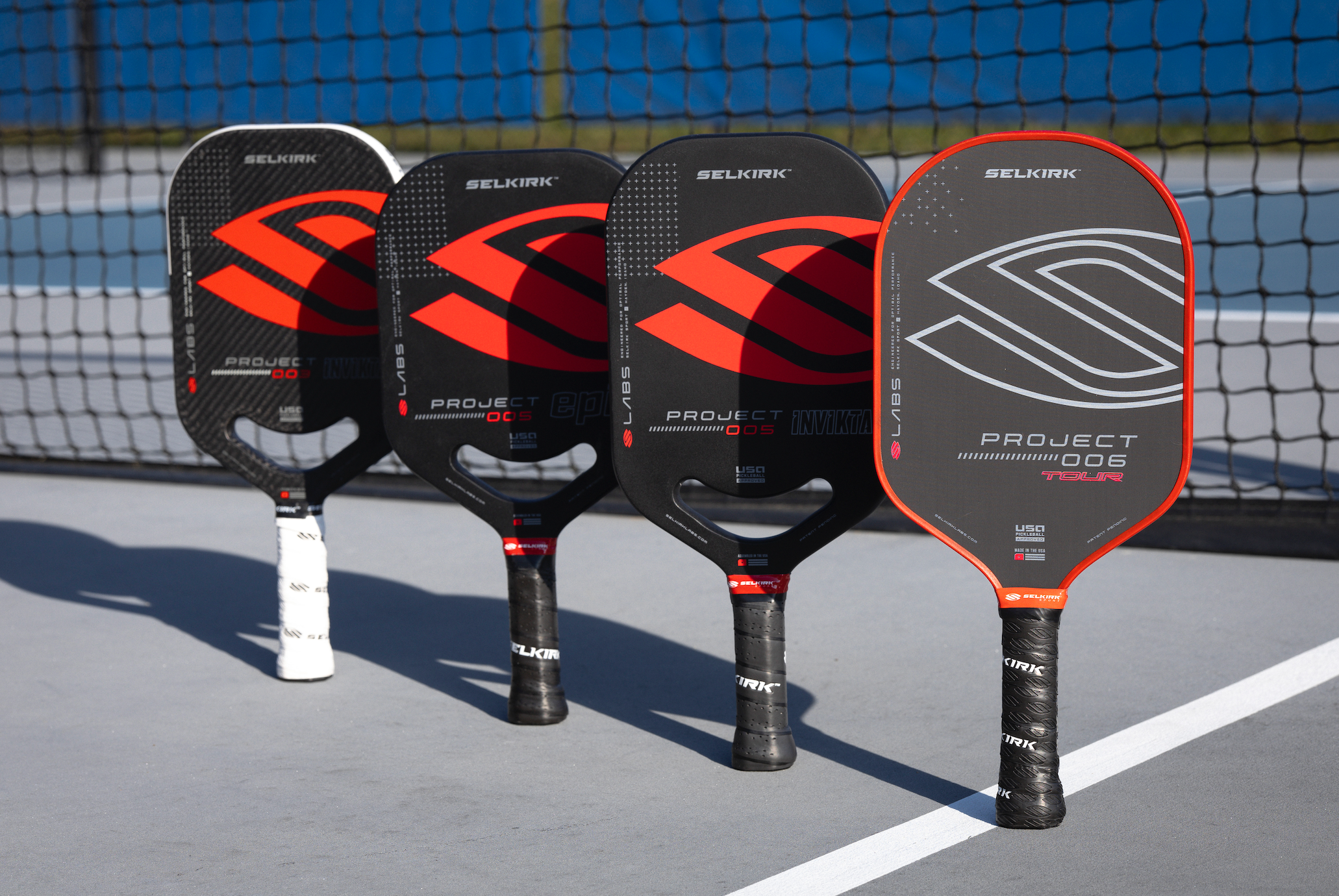
Selkirk Labs, a renowned name in the world of pickleball, has been redefining the industry with its paddle innovations since its launch in February 2022.
In a sea of manufacturers, Selkirk Labs stands out due to its artistry, as every pickleball paddle is meticulously handcrafted in the United States. The heart of Labs lies in its initiative to invite pickleball enthusiasts to join the development process by offering their invaluable feedback on Labs projects before they hit the mass market.
In this exclusive interview, Co-Founder and Co-CEO Rob Barnes and Director of Research and Development Tom Barnes shed light on the intricate process of how a Selkirk Labs pickleball paddle is made.
Let’s start with ideation, how do you determine what you’re trying to accomplish when creating a paddle?
Rob Barnes: "It all begins with a vision for what we’re trying to get out of a paddle, whether it’s more power or more control. But turning that vision into a reality takes a lot of iteration and testing. We're constantly exploring new materials and manufacturing methods. We ask ourselves, can we do this differently? Are there new materials or manufacturing methods to try? And then it comes down to making a bunch of iterations to see which changes affect playability and durability and making decisions from there to improve the paddle."
There is a lot of debate about which materials create the best paddles. What guides your decision on which materials to use?
Tom Barnes: “We are constantly exploring different combinations of materials, such as face and core types to get the most out of a paddle. Our discovery process involves hundreds of iterations, testing every possibility to find the perfect formula.”
Rob Barnes: “Quality is at the forefront of everything we do — in fact, it’s our default standard — and our next focus is performance. Some materials become trendy, but at Selkirk, we steer clear of materials that don’t increase a paddle’s performance and durability. At the end of the day, we need to know that we’re using the best possible materials to increase performance. Period.”
A large part of Selkirk Labs’ model is inviting players to offer their input on the research and development of paddles. How many iterations of paddles are typically tested before you’re confident that a paddle is ready for mass market?
Rob Barnes: “Right now, we follow a tiered approach. First, the paddle has to get past our internal team — we have a baseline for performance attributes and quality. The most iterations happen here and sometimes we test hundreds of iterations before we move to the next tier. If we sent out all of our iterations, it would be so overwhelming for our customers that no one would ever be able to choose which paddle is best for them.”
Tom Barnes: “Once it passes our internal criteria, we send several iterations to some key professionals and members of the pickleball community to have a single-blind study to get their feedback on the iterations. Once we have their responses, we analyze the feedback to get one iteration ready to go to market as a Selkirk Labs project.”
Even after it’s sold as a Labs project, you’re still collecting feedback. How does this inform your decisions on paddles sold under the Selkirk Sport line?
Rob Barnes: “Testing is kind of the secret sauce to Labs. It allows us to take thousands of data sets from experienced players and create something that they will love and trust. Labs was created to bring even better technology to the mass market long-term, and the invaluable input we gain on Labs projects helps us do just that.”
Tom Barnes: “Take the release of the Luxx Control Air as an example. That paddle is based on the Labs 003. After the 003 was released, we heard people say it wasn’t powerful enough, which led to our advancements with Florek Carbon Fiber. We made improvements based on players' feedback of that paddle, and that’s why you see players like Jack Sock using it today. The proof is in the pudding that the system works. We can take the Labs feedback, make adjustments to improve the product, and within a year, have a much better product for the mass market”
What innovations to processes is Labs making to better itself as a company?
Tom Barnes: “Although we are already one of the most data-driven paddle companies, we are becoming even more data-oriented day by day. The “throwing spaghetti at the wall” approach can be cheaper and easier, but we’re now able to actually quantify in numbers what power, control, and spin look like within the framework of certain materials. If we can start at a stronger point on paper, the more successful our paddle iterations will be from the start.”
Rob Barnes: “We are and have always been data-driven, but we’re always striving to be better. At the end of the day, our goal is to fuel the pickleball obsession found inside of every pickleball player, and we love using their direct feedback to give them what they desire in a paddle.”







